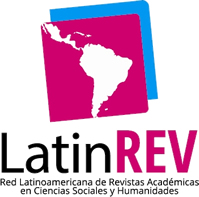Hacerse una imagen: mujeres y educación en la Roma imperial
DOI:
https://doi.org/10.53645/revpropulsion.v2i1.59Keywords:
Subjectivities, self-image, epistolary genre, education, ancient philosophy.Abstract
The purpose of the text is to highlight the relationship between philosophy, as a way of life in Rome, and the education of women. We assume that the importance of individual affirmation in this horizon is associated with their presence in society related to a name (family home), and is recognized by the way their life is recorded in public records. So adjusting to a moral regime through reflection, that is, becoming an ethical subject is a task assumed by each individual, and not exactly an obligation. Which is relevant for the contemporary discussion of the constitution of subjectivity. Finally, it is desired to draw attention to the expression of female subjectivity, within the margins of action that its historical horizon makes possible and even gives rise to the manifestations of resistance.
Downloads
References
Aubry, Gwenaëlle y Ildefonse, Frédérique. (2008). Le moi et l’intériorité. Vrin.
Canto, Alicia M. (2003). La dinastía Ulpio-Aelia (98-192 d.C.): Ni tan ‘Buenos’, ni tan ‘Adoptivos’, ni tan Antoninos en Gerión.(21, núm. 1).
Cicerón, Marco Tulio. (1966). Bruto. UNAM.
Derrida, Jacques y Bennington, G. (1994). El nombre propio en Jacques Derrida. Cátedra. Ebbeler, Jennifer. (2007). Mixed Messages: The play of Epistolary Codes in two late antique correspondences en Ruth Morello y A. D. Morrison (eds.), Ancient Letters. Classical and Late Antique Epistolography. O. U. P.
Hacerse una imagen: mujeres y educación en la Roma imperial
Engel, David M. (2003). Womens’s role in the home and the State: Stoic theory Reconsidered en Harvard Studies in Classical Philology.Harvard University. Vol. 101.
Foucault, Michel. (2001). L’Hermenéutique du sujet. Cours au Collége de France. 1981-1982. Gallimard.
Foucault, Michel.(2006). Seguridad, territorio, población. Fondo de Cultura Económica.
Freisenbruch, Annelise. (2007). Back to Fronto: Doctor and Patient in his correspondence with an Emperor en Ruth Morello y A. D. Morrison (eds.), Ancient Letters. Classical and Late Antique Epistolography. O. U. P.
Giardiana, Andrea. (1991). Introducción en El hombre Romano. Alianza.
Gibson, Roy K. y Morrison, A. D. (2007). What is a letter en Ruth Morello y A. D. Morrison (eds.).
Ancient Letters. Classical and Late Antique Epistolography. O. U. P.
Grimal, Pierre. (1997). Marco Aurelio. Fondo de Cultura Económica.
Grimal, Pierre. (1999). La civilización romana. Vida, costumbres leyes, artes. Paidós.
Hadot, Pierre. (1997). La citadelle interieur. Fayard.
Hadot, Pierre. (2000). ¿Qué es la filosofía Antigua? Fondo de Cultura Económica.
Harris, William V. (1989). Ancient Literacy. Harvard University Press.
Hegel, Georg Wilhelm Friedrich. (1807/1966). Fenomenología del espíritu. Fondo de Cultura Económica.
Hemelrijk, Emily A. (1999). Matrona Docta: Educated Women in the Roman Aelite from Corneliato Julia Domna. Routledge.
Johnston, Harold W. (2010). La vida en la antigua Roma. Alianza.
Knapp, Robert. (2011). Invisible Romans. Harvard University Press.
Marquet, J-François. (2009). Leçons sur la phénoménologie de l’esprit de Hegel. Ellipses. Nicolet, Claude. (1991). El ciudadano y el político en El hombre Romano. Alianza.
Pinkard, Terry. (1988). Hegel’s Dialectic. The explanation of posibility, Temple University Press. Pomeroy, Sarah. (1999). Diosas, rameras, esposas y esclavas. Akal.
Puig Rodríguez, Mercé. (1997). Mujeres Romanas en Plinio el Joven en Cuadernos de filología clásica, nº 13. Servicio de Publicaciones UCM.
Seider, Richard. (1969). Pintura Romana. Fondo de Cultura Económica.
Séneca, Lucio Anneo. (2001). Consolaciones. Apocolocintosis. Gredos.
Shelton, Jo-Ann. (2013). The women of Pliny’s Letters. Routledge.
Trapp, Michel. (2003). Greek Latin Letters. C. U. P.
Veyne, Paul. (1991). El imperio Romano en Historia de la vida privada 1. Del imperio Romano al año mil. Taurus.
Zanker, Paul. (1992). Augusto y el poder de las imágenes. Alianza.

Published
Versions
- 2021-01-15 (2)
- 2021-01-15 (1)
How to Cite
Issue
Section
Categories
License
Copyright (c) 2021 Norma Hernández García

This work is licensed under a Creative Commons Attribution-NonCommercial 4.0 International License.
- Esta licencia permite a los reutilizadores distribuir, remezclar, adaptar y construir sobre el material en cualquier medio o formato solo con fines no comerciales, y solo mientras se dé atribución al creador.Incluye los siguientes elementos: POR – Se debe dar crédito al creador NC – Solo se permiten usos no comerciales de la obra.







